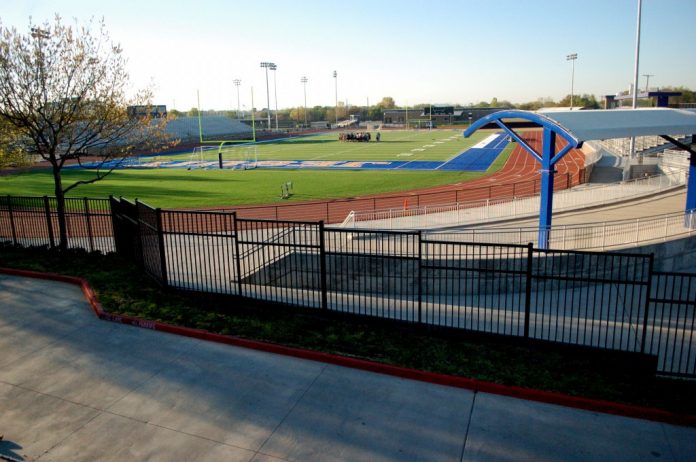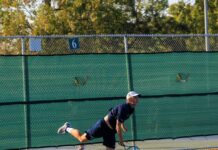Growing up, most Jesuit students, as boys – and kids in general – long to fulfill dreams of athletic excellence mirroring performances of legendary professionals such as Michael Jordan or Babe Ruth. Many practice for countless hours in their backyards or at the local park, reenacting the memorable moments of sports competition.
It is not uncommon to hear “3, 2, 1…He makes it! The crowd goes wild!” erupting from basketball courts around the neighborhood. However, as many find out throughout their lives, playing sports at such a high level is very difficult, requiring superior drive, determination, and the innate talents that characterize all professional athletes.
This lesson is one learned, at times accompanied with massive disappointment and anger, most commonly at the high school level. High school is usually a time when, as young adults, most people begin to start thinking of what direction they would like to take their life. Some who may have visualized an illustrious athletic career are often disappointed when they are cut from a varsity sports team.
Jesuit is no different. Though unique in many ways, and overall a place that makes a deliberate effort to offer activities for students of all interests and talents, the simple fact remains that there are some people not talented enough to compete on athletic teams at the varsity level.
This is especially true at a place like Jesuit, a school that competes at the highest high school level in Texas, known for producing some of the world’s most talented athletes including all-pro quarterback Drew Brees and NBA champion Chris Bosh. As a result, this hyper-competitive environment results in cutting people from many a high school team. This reflects nothing about the person’s character or worth, it simply means that they are not cut out for sports at this level.
At Jesuit, the most difficult team to make is the basketball team, with its relatively small roster. Only ten to twelve spots exist on the varsity team and a majority of these are often seniors. But another contributing factor, as head basketball coach Chris Hill puts it, is “…the popularity of basketball. Behind football, it’s the most popular high school sport and lots of kids want to play; but, unlike football, we have significantly less roster space.”
As a result, Coach Hill and his staff have come up with a unique system of evaluating players before they come into tryouts each year, giving them an idea of the chances they have of making the team. “We give them each a number,” he says, “a ‘1’ meaning you will definitely be on the team, a ‘2’ meaning it is most likely you will be on the team, a ‘3’ says that we just don’t know at this point, and a ‘4’ means that it will be very difficult to make the team.” This often leads many of the people who receive ‘4’s to either quit or work extra hard to improve to the point where the coaching staff chooses to put them on the roster. What this system does well, says Hill, “It lets the kids know where they stand. There isn’t the ambiguity or mystery that many coaches like to have. We want them to know what their chances are.”
Baseball and soccer at Jesuit do things more traditionally, as these two sports seem to be ones that kids have decided to specialize in at an early age; thus, it cuts down on numbers of players, and also guarantees that most are relatively aware of their own skill level.
For soccer, a sport well known for rigorous select-team schedules, many kids will be placed on the varsity team as freshman. “We get a lot of kids who come in already possessing a good deal of skill,” says Coach Charlie Delong, “due to their extensive practice with club teams. The kids really know how good they are around sophomore year, sometimes freshman. So, when a kid is cut, it doesn’t come as a surprise because they already understand that their development is behind many of the players who come out.”
A similar situation arises in baseball, as many kids realize quickly that they are far behind many others and they are aware early that they will be cut, and many decide to pursue other interests. “A lot of kids usually come out for the freshman team,” says assistant coach Sean Gavin, “but as they move on, many understand that baseball is a very hard sport to play, and we have a lot of talented kids, so they make our jobs easier by not having to cut a lot of them because they decide to go after other dreams they have.”
Lacrosse is another Jesuit sport that has recently instituted a unique selection policy. This year, the lacrosse program essentially has four categories that the coaching staff places kids in after evaluating them over a three-day tryout period. The first group is the varsity players, those who will make up the starting lineups and first substitutions for the team. Next come swing players; these are usually younger players, often freshmen and sophomores, who have shown that they can play at the varsity level, but just won’t be able to have enough chances to play in varsity games, so they dress out for both varsity and JV games, receiving playing time in both. Third are the junior varsity players.
These players have shown an ability to handle varsity-level practice, but the coaches don’t feel comfortable playing them in varsity games. Last, the new addition this year is the freshmen development program. “We didn’t want to cut freshman,” says assistant coach and Jesuit graduate Anthony Sherman, “We at least wanted to give the new guys a chance to hone their skills and develop physically before we told them they couldn’t play.” The freshmen development group practices privately with Head Coach Chris Surran only three times a week during their athletic period (compared to six times a week of two-hour plus practice for varsity) and they will have a chance to compete in JV games. However, if sophomores or juniors show an inability to handle varsity practice, they are cut from the team.
However, the largest roster on campus is obviously the football team, with approximately 60 players on varsity. This is due both to the large number of kids who go out for the team, and because the football team does not cut players, meaning that a player will not be cut for lack of talent, and will be placed on a roster of either JV or varsity as long as they attend practices and required training Coach Brandon Hickman says, “I believe it is a UIL rule in Texas not to cut players, but even so, any high school I have coached at has not done it, and especially at place like Jesuit where camaraderie and brotherhood is so highly valued I see no need to cut anyone.”
For this reason, parents also enjoy having their kids going out for the football team, because much of the time a parent will be much more upset than a student about their child not making the team. This, of course, is due to the fact that most parents think very highly of their own children. However, this is also due to the aforementioned “reality check” that many students receive upon entering into high school sports. “The kids understand better than the parents a lot of times why they were cut,” says Coach Sherman. “They come out and they see that they just aren’t ready to play at that level. The parents don’t know that, they don’t see practice and lifting and conditioning the way the kids do.”
It’s obvious that Jesuit has produced some very talented athletes. The 2012 football team is sending 5 seniors to Division 1 programs and lacrosse is sending 6. Jesuit is a place where students can expand their horizons and those who may not be as gifted athletically can find their place in theater or academics or any of the numerous clubs on campus. Being cut from the team is a difficult and emotional ordeal that leaves many distraught and confused. But many times it opens up doors for students that they never would have thought to seek out without experiencing the heartbreak and moving on to find their true selves.






